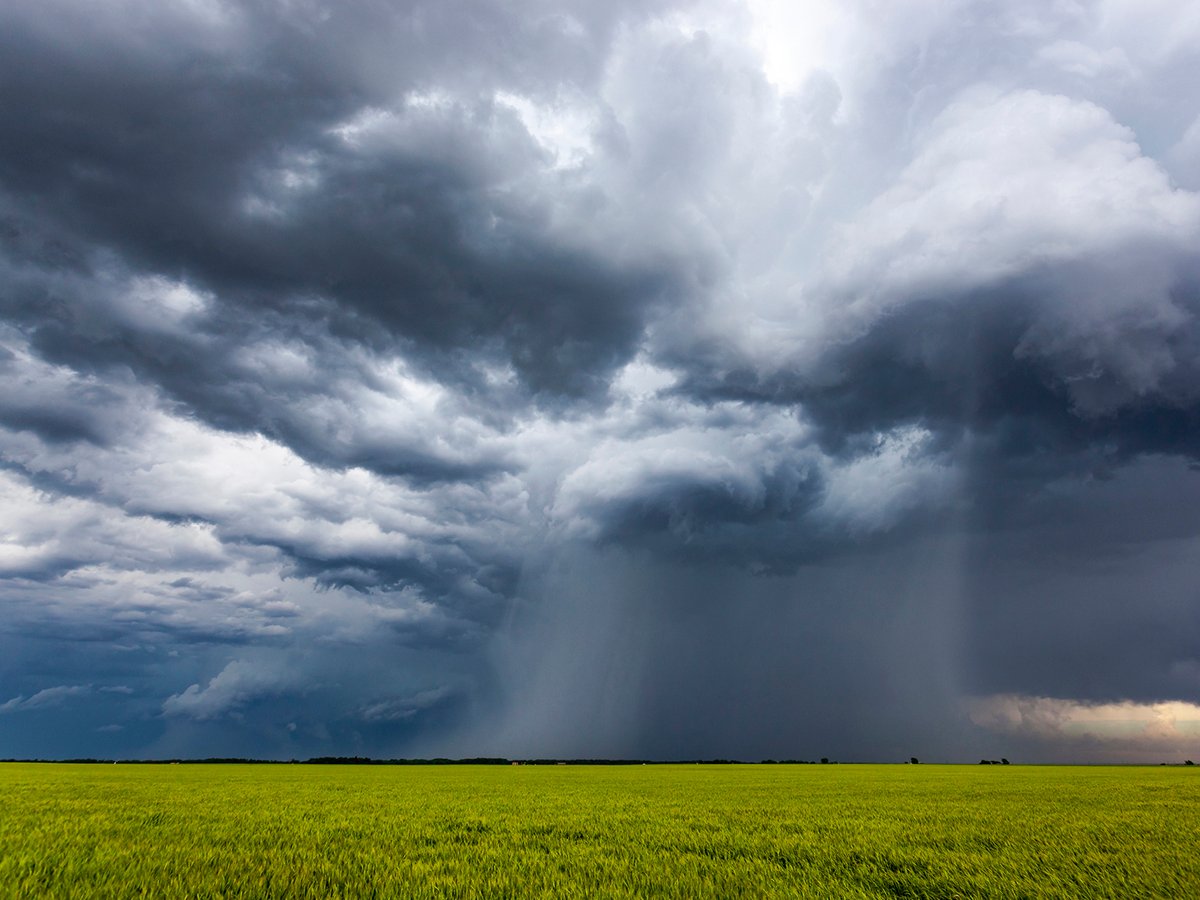Prairie farmers will need to take advantage of good years to ride out a
series of bad ones predicted in a federal climate change report.
Climate Change Impacts and Adaptation, a report on the effects of
climate change on agriculture, documents the temperature increases
already seen in Canada. Changes are particularly evident in lows
recorded overnight and in spring and winter.
The report was published earlier this month by Natural Resources Canada.
David Sauchyn, research co-ordinator with the Prairie Adaptation
Read Also

Extreme rain increases as planet warms
In this issue, we are going to wrap up our look at extreme rainfall by examining the different weather patterns that tend to be associated with these rainfall events.
Research Collaborative in Regina, said scientists are also predicting,
albeit with less certainty, more moisture and extreme climate events.
“With the bad, you get the good,” he said. “You’re going to have
drought but you are also going to have occasionally more water.”
The challenge is to adapt, he said.
Sauchyn said prairie farmers are well equipped to adapt, given the
harsh extremes of their climate.
“Prairie farmers already have the adaptive capability to deal with
variability. They just will have to deal with more and will have to be
even more flexible than they already are,” he said.
Sauchyn cited the importance of capturing, conserving and storing water
in good years to ride out successive seasons of drought.
Provided there is enough water, increased heat means a longer season
and better forage crops. It could also provide new opportunities to
grow warmer weather crops and to farm in the southern fringes of
forested areas.
The driest parts of the Prairies will not benefit from the extra heat
as much as the wetter, cooler areas.
“This is not good news for the southwestern Prairies where water is
lacking,” said Sauchyn. “Excess heat will not be beneficial.”
He said converting more cereal land to forage production is another way
for farmers to adapt to climate change.
The report concludes that climate change will bring a mix of
conflicting results. Warmer temperatures, longer growing seasons and
elevated carbon dioxide concentrations will likely help Canadian
agriculture, while reduced soil moisture, extreme climate events, soil
degradation and pests could offset and potentially exceed the benefits.
It adds that appropriate adaptations will require the participation of
groups like farmers, government organizations, research institutions
and the agri-food industry.














